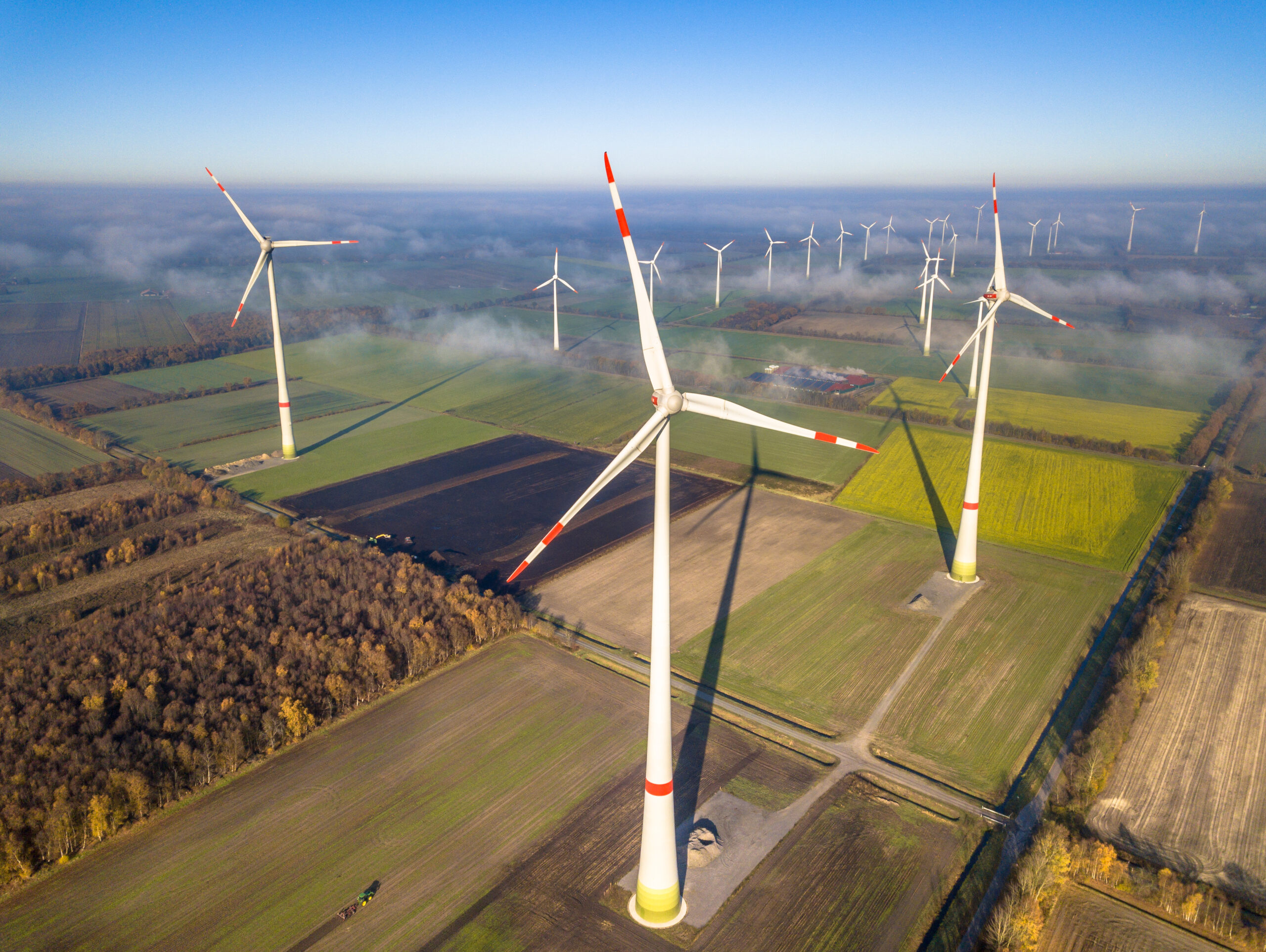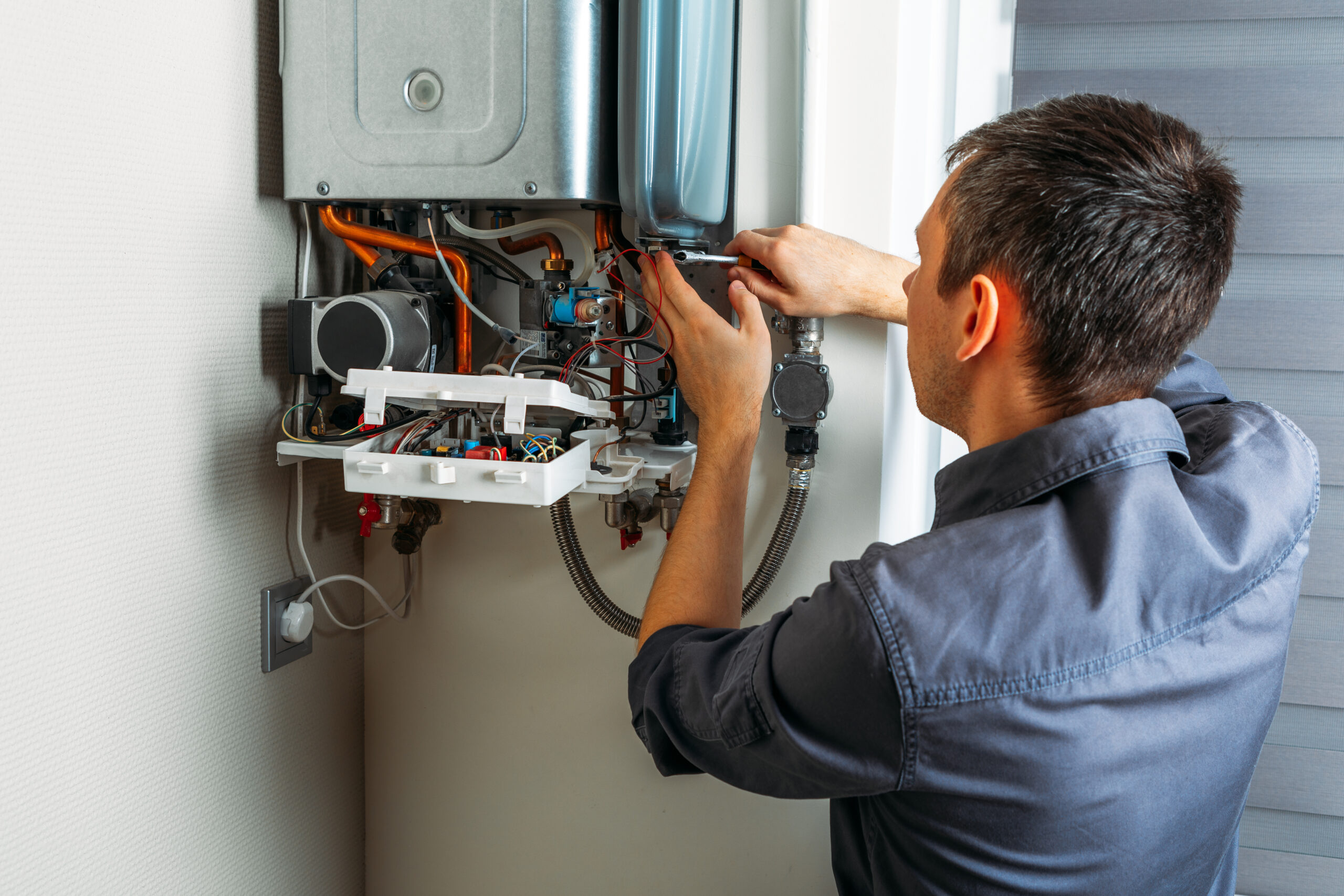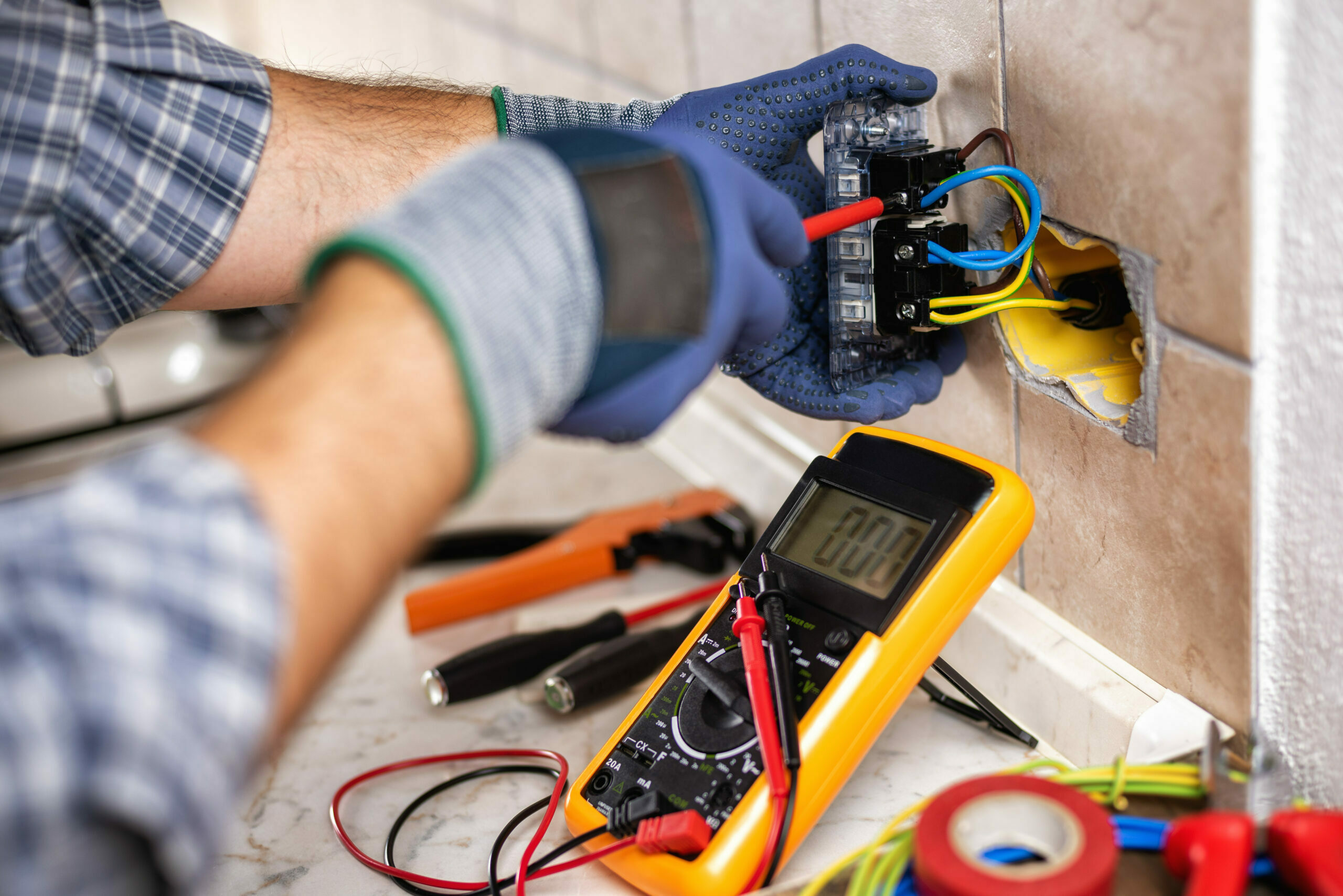At The Trades College, we offer renewable energy courses to become a renewable energy engineer. This could involve working on technology such as solar panels and wind turbines. Wind power is one of the most sustainable ways of generating energy. We’ve all seen those huge wind turbines dotted around the countryside and the coast – but how do they work? Keep reading to learn more!
How do wind turbines work?
Wind turbines generate energy (usually in the form of electricity) using natural resources. You’ll often spot them as large white poles with blades at the top (similar to a windmill). Smaller turbines also exist to power specific items.
Wind passes over the blades of the turbine, causing them to turn. This movement results in the generation of kinetic energy – which can be converted into electricity. Typically, wind turbines will have three blades that are attached to a rotor. This rotor is attached to the main shaft, which then connects to a box called a nacelle. The nacelle is the thing that converts the energy into electricity. Once electricity has been generated, it can be transferred to the National Grid to be used in homes or businesses across the country. Alternatively, it can be used by private properties directly.
You may have seen multiple wind turbines together – this is known as a wind farm. These are commonly seen in the countryside (onshore), on the coast, or even out at sea (offshore). This is because these areas tend to be windier, so there’s more opportunity to generate electricity. They’re also generally less likely to disrupt the public and natural environment in these areas.
What are the advantages of wind power?
There are many incredible advantages to using wind turbines as a clean, sustainable source of electricity. Let’s take a look at some of the positives…
It’s sustainable
The wind is a renewable energy source – i.e. it can be used repeatedly without ever running out. It’s a natural resource, generated by the sun heating the Earth’s atmosphere, in combination with the rotation of the Earth, and its irregular surface. Essentially, as long as the sun is shining and the Earth is spinning, we’ll always have wind.
It’s non-polluting
Unlike fossil fuels and other common energy sources, wind energy is clean. Wind turbines generate electricity with no unwanted by-products. Coal and natural gas can produce particulate matter – which can be harmful to the environment, wildlife and humans.
It’s efficient in the UK
The United Kingdom is positioned between the North Atlantic Ocean and the North Sea. That makes it quite a windy place (as we all know!). This is ideal for wind power, as it can generate its own energy without relying on exports from other countries. Additionally, it can help to keep energy costs low and even generate more jobs – find renewable energy courses here!
What are the disadvantages of wind power?
Every energy source is sure to have some disadvantages, however, most of wind power’s downfalls can be mitigated. Some of these negatives include…
Wind turbines can affect wildlife
Man-made structures are sure to have some impact on the environment around them. In terms of wind turbines, flying wildlife is most commonly affected – this includes birds and bats. This is because it’s common for them to fly into the blades. Green energy providers are always looking to impact the environment as little as possible, so wildlife will often be minimally affected. Unfortunately, these issues can’t always be avoided.
They can be seen as eyesores
There are often complaints about the placement of wind farms. Most people do understand the benefits of wind energy for the environment, however, some do have concerns about their aesthetic impact as well as potential noise. This is combated by painting the turbines with neutral colours such as white and grey – making them less of an eyesore.
There might be competition for land
Wind farms need a decent amount of land to operate. This land is often fields in the countryside – fields that have other uses such as agriculture and farming. Because of this, energy companies may have to compete with other industries to purchase land.
Renewable energy courses near you
Now that you know a bit more about wind power, you can understand how it’s incredibly beneficial. With the growth of wind farms in the UK as we move towards greener energy sources, career prospects are rising. Now is the perfect time to start your training to become a renewable energy engineer. Whether you’re working on wind turbines or solar panels, you’re sure to find plenty of opportunities.
Check out our renewable energy courses at The Trades College, or get in touch to have a chat about your options!




